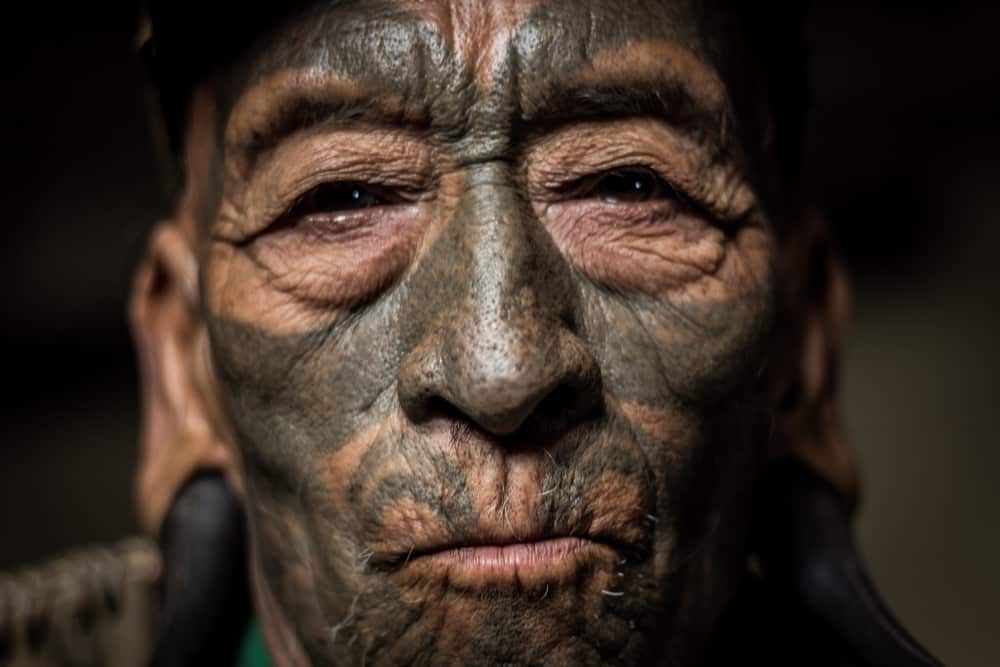Unveiling Nagaland's Konyak Tribe: Headhunters of Nagaland
The Konyak tribe lives in the northern part of Nagaland. They historically had a reputation of being Headhunters of Nagaland. However, more is needed to know about their traditions and culture. This blog aims to introduce this less-known tribe simply briefly. It discusses the history and culture of the Konyak people in their villages in the rugged mountains and shares some exciting aspects of their daily life and traditions.
History
The Konyak tribe has lived in the northern parts of Nagaland for many years. In the past, the Konyaks were feared as Headhunters of Nagaland. Headhunting was part of their culture many years ago. When they fought battles with other tribes, they would cut off the heads of their enemies. Bringing home enemy heads was seen as brave. It showed how strong and courageous a warrior was.
But they have not done this for a long time. In the 1960s, the Indian government said Nagaland Headhunters could not continue this activity. Now, the Konyaks farm and live in wooden houses. They also dance during festivals, remembering their past as brave warriors. But they do not fight battles or take enemy heads nowadays.

Culture and Tradition
The Konyaks are one of the most prominent tribes in Nagaland. They live mainly in Mon district, but many years ago, they lived in other areas, too, like Arunachal Pradesh and Assam. There, they were known as the Wancho people. They share culture with other groups living near them. In the past, the Konyaks were known as headhunters.
They would attack villages of other tribes and take the heads of men they killed in battles. Having more heads meant the warrior was mighty. Now, they do not do this anymore. They accepted Christianity later than other Naga tribes. Today, they still follow many traditions and live according to their old customs. They have leaders called Anghs, whom they respect very much.
Skills and Festivals of the Konyak Tribe
These headhunters in northeast India have many skills. They are very good at making guns and creating gunpowder using unique methods. They are also very skilled in handicrafts, including basket-making from cane and bamboo. They can also work very well with brass. Festivals are significant for them.
Aolingmonyu is the biggest festival celebrated in April. It thanks God for the new year. Another one called Aonyimo happens after crops like corn are planted. Laoun-Longmont is a big Thanksgiving festival after all farm work is done. They sing and dance during these festivals. Shangnyu and Chui villages are special; people learn a lot about Konyak culture by visiting them.
Traditional Clothing
In old times, Konyak men wore only a small cloth to cover private parts. Women wore a tiny skirt barely 10 inches long. They decorated their bodies with headgear, bracelets, necklaces and other items instead of proper clothing. Now, men wear a cloth belt around 10 inches long on their chest. It has colourful embroidery. They also wear a long apron.
Women wear a sleeveless top with a long wraparound skirt going below the knees. Both men and women decorate their bodies with beautiful jewellery on the neck, head, ears, etc. Older men especially like to drink black tea called ‘Khalap’. A small pot for making it is always kept near the fireplace in homes. The Konyaks are known to be very friendly and warm-hearted, and they enjoy celebrating festivals.
Food, Faith and Religion
The Konyaks like to eat pork and mithun meat a lot. They also eat rice and green leafy vegetables. Their diet includes different types of meats as well as plant roots and leaves. In the olden days, the Konyaks believed that everything around them had a soul or spirit. They thought they were all part of one big family under a supreme god called Longjing Pesao Te Khiimpu.
These headhunters in northeast India believe in nature, land, and ancestors. They respect the spirits that they feel control nature. Now, most Konyaks follow Christianity. However, some old beliefs from the past still remain. They feel religions should bring people together, not divide them. Every person has the freedom to choose their own faith.
Notable people
There are some famous Konyak people who have worked to help their tribe. Chingwang Konyak was a member of Parliament from 1980 to 1984. He worked hard for the Konyak people in Delhi. N. Bongkhao Konyak is a well-known leader from the Tobu area. Phangnon Konyak currently serves as a member of the Rajya Sabha. P. Paiwang Konyak holds an important position as a minister in the Nagaland government.
Noke Wangnao represented the Konyak tribe as a member of the Nagaland Assembly for many years. W. Wangyuh was also a Lok Sabha member previously fighting for the rights of Konyaks. All these leaders try their best to raise issues of development, rights and traditions of the Konyaks in the government. Their efforts help the community progress while keeping their unique culture alive.
Conclusion
The Konyak tribe led an independent life, upholding their rich culture and traditions despite facing conflicts and changes over time. Being known as Nagaland Headhunters was part of their past, they now pursue peaceful livelihoods. Their vibrant festivals and attires provide a glimpse of their unique identity. Despite challenges, the tribe continues preserving its cultural heritage for future generations.